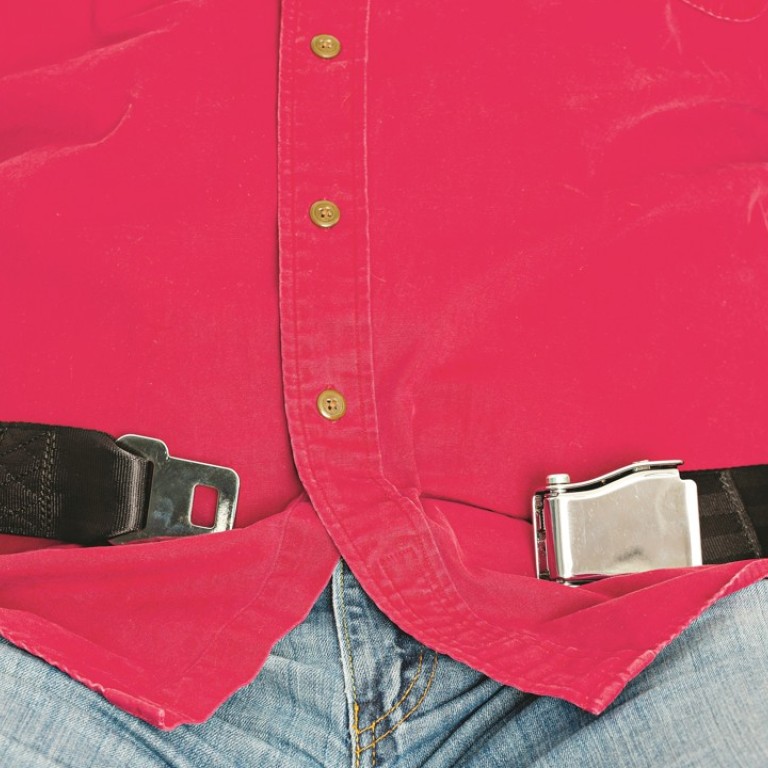
The best airlines for overweight or obese travellers – ones with the widest economy seats
- The width of economy seats varies widely between airlines and airliner types
- With one in 12 people now classed as obese, airlines are having to think about more than just their own bottom line
Have plane seats shrunk or have passengers got bigger? The aviation industry is all about getting bums on seats, but it is not a one-size-fits-all market.
And with obesity now a global trend, airlines should have policies in place to meet the needs of larger travellers.
The World Health Organisation reports that, worldwide, obesity has nearly tripled since 1975. According to its figures, in 2016 more than 1.9 billion adults were overweight, and of those more than 650 million – around 8 per cent of the world’s population – were obese.
“Airlines should consider the needs of travellers of size,” says Tony Harrell, travel consultant and owner of Dallas, Texas-based Abundant Travel, whose job it is to find the most comfortable flights for larger travellers.

“While airline seats tend to be shrinking to maximise profit, the world’s population is becoming larger overall … travellers of size deserve a holiday as much as anyone else,” Harrell says.
So how should “plus-size” travellers choose an airline, and what other considerations are there?
“TAP Portugal, WestJet and Singapore Airlines offer the widest economy seats,” says Harrell. He points out that a passenger’s ability to get easily around an airport, making connecting flights and the length of flights are all vital considerations.
Skyscanner recommends low-cost airline JetBlue, which it claims has wider than usual seats. It also highlights the fact that some airlines (such as Air Canada) class obesity as a disability, and make arrangements for larger travellers to have different seating.
Virgin Australia walks back plans to acknowledge veterans on flights
Travellers are recommended to check seat width before they book an airline ticket. The average width of an economy seat is 43cm (17 inches), though there are big variations.
TripAdvisor’s SeatGuru is the most precise resource on seat width. For short-haul flights it highlights Air Canada’s 51cm-wide (20.2 inch-wide) seats; the 20-inch-wide seats of North American ultra-low-cost airline Spirit are almost as generous.
Among Asian airlines, Bangkok Airways comes top with seat width of 19.8 inches, followed by China Southern with 19.7 inches, and Cathay Dragon (formerly Dragonair) with 18.7 inches. However, seat width varies according to aircraft type, so check before booking.

When flying long-haul – where TAP Portugal and WestJet rule with 20 inch-wide seats – some larger travellers leave nothing to chance by spending more on Premium Economy seats. These seats tend to be 18 or 19 inches wide as a general rule.
“I recommend to my clients that they consider reserving additional seating or upgrading to business or first class as applicable,” says Harrell. An empty seat next to a removable armrest is always a plus, though something that is unlikely to happen by chance given how many planes fly at capacity these days.
Alternatively, booking an aisle seat removes the need to clamber over other passengers and affords a little more leg room.
The design of airliner interiors is changing too.
Japan Airlines pilot arrested in UK for drinking before flight
“Airlines are much more considerate of the positioning and flexibility of the aisle-side armrests when installing new seating,” says Luke Miles, managing director of UK-based multidisciplinary design agency New Territory, and former head of design for Virgin Atlantic.
“The industry needs to apply universal design principles to ensure that there is comfort, accessibility, and ease of movement for each and every passenger.”
The industry is coping with the increase in the average size of passengers using a concept called “universal accessibility”, adds Miles. Seat width aside, other important factors to consider include easy luggage storage, the structure of the aisle, and how easy it is to get in and out of a seat.

An underlying problem is that economy class has been long neglected by airlines busy fitting flatbeds to business class cabins.
“There is an apparent desire to improve economy cabins, but the innovation there still feels limited,” says Miles. However, he predicts a shift towards a more bespoke, on-board service.
The global tourist invasion: what travellers can do to alleviate it
“Seats could be prepared in advance of the flight to accommodate your specific needs as a passenger, where the space you occupy is more finely tuned to your preferences, and ambient technology could be used to ensure that key features of your seat such as lighting, media and seating position cater towards your specific needs,” says Miles.
“The cabin image becomes less homogenous and more reflective of the diversity of the passengers on board,” he adds.

